How to build an attacking sequence from set-piece – the Joe Schmidt way
Coaching at all levels sometimes tends to view attacking plays from set-piece as a way to land ‘one big punch’. You have your set move, and you look to exploit what you see as an immediate weakness with it.
Although this is a legitimate, and very common approach, there is also a more subtle method available. If you can foresee the shape of the defence after three or four phases, and know with reasonable certainty where individual defenders will be after those phases, you can look to delay the big punch until it has even more force. To pursue the analogy, you ‘pop’ with a succession of jabs to weaken the defences, before delivering your big right hand!
This process of manipulating defences also has more currency in the context of the game as a whole. If you can get a defence to react to what you did before, then you have also created a chance do something different from the same ‘look’.
Ex-Ireland head coach Joe Schmidt has always been able to create both the one-phase attacking moves, and the three or four phase sequences with equal facility. Arguably, his three or four phase sequences are even more potent than the one-phase strikes.
The World Cup group game between Ireland and Japan provides some revealing examples of how Schmidt created different ways of manipulating the left side of the Brave Blossoms’ defence, which was clearly seen as a weakness in the Ireland preparation.
The first example occurred in only the first minute of the game, with the idea of setting up the defence for a kick into the Japanese backfield.
The sequence began from a lineout on halfway, and lasted for four phases in just under half a minute. There were only seven passes made in those four phases, and all of them were short and risk-free:
The launch play is a simple switch into midfield for wing Keith Earls, and the tackler is the Japanese loose-head prop Keita Inagaki, sweeping across from the end of the lineout. Tuck that information away for safe keeping, for now.
The next two phases are both based around the idea of stripping down the Brave Blossoms’ defence on the short-side. On second phase the Irish forwards indicate that the following play is going to roll around to the same-way side:
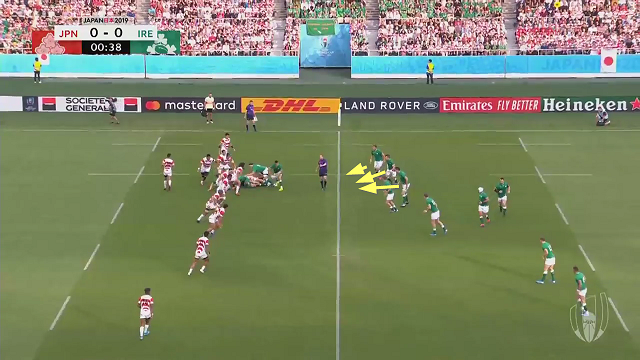
There is nobody on the short-side at this stage, but by third phase the picture has changed significantly:
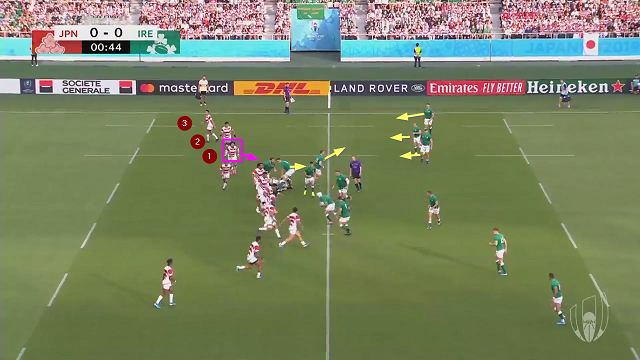
Although play is still flowing towards the middle of the field, the short-side is now populated by three Irish attackers, with a fourth about to join them. The three Japanese defenders are Inagaki, number 13 Timothy Lafaele and number 10 Yu Tamura – tuck that away for future reference too.
When Ireland finally change direction and come back to short side, they enjoy a nice 5-on-3 advantage in that area and have created a zone for their number 10 Jack Carty to kick in behind the Brave Blossoms’ left wing Lomano Lemeki.
This was an area Ireland probed on more than one occasion in the first quarter of the game:
Note that the Japanese short-side defence has become more ragged, and shortened up considerably in this instance.
Having softened up the short-side defence with the kick, Ireland next looked to cash in on the concessions which were beginning to appear with ball in hand. Starting from a lineout on the left side of the field, Ireland ran four simple phases (including only four passes) over towards the right 15 metre line.
The phases were carefully targeted so that Inagaki became the first forward wrapping to the far side on each occasion:
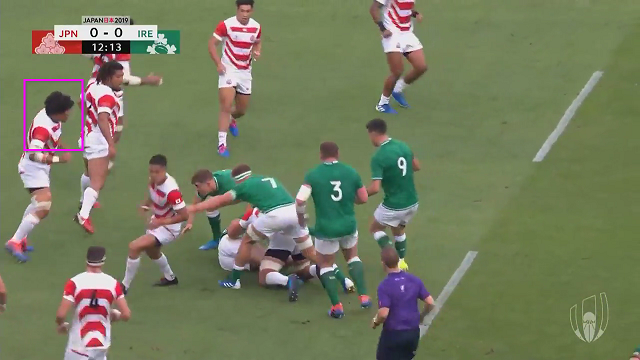
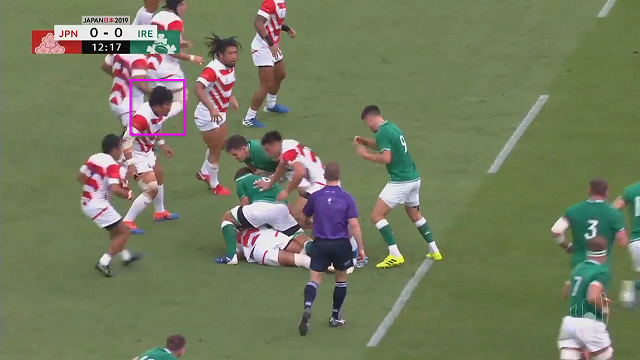
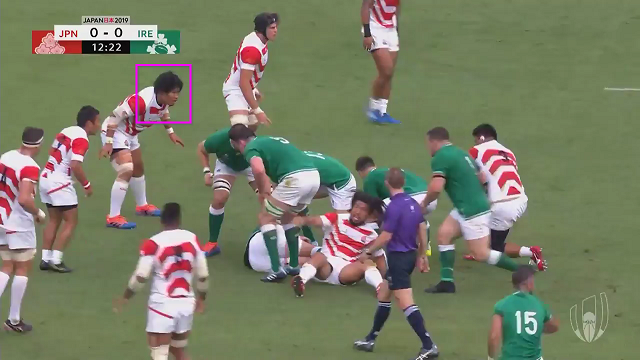
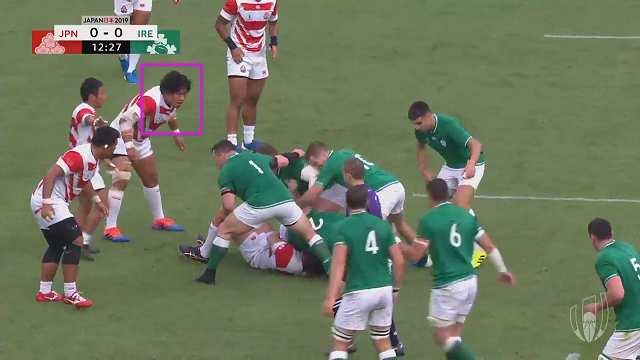
By 4th phase Ireland have the picture they are looking for. For the first time, Inagaki has a back (Lafaele) outside him and the gap between the two has increased in width to about three or four metres. That gap turns out to be fatal:
Inagaki takes a step back towards the (Ireland) left as the key phase begins and that widens the gap a little more, enough for Ireland outside centre Garry Ringrose to penetrate it with a clean break.
Inagaki has run more than 50 metres across the width of the field and reset at guard four times, before being asked to change direction quickly and tackle a slippery outside back!
The snapshot shows how carefully the opportunity has been manufactured:
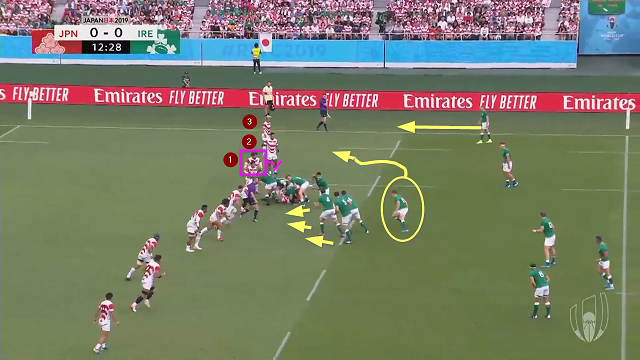
All the ‘tells’ indicate that play is going left. Scrum-half Conor Murray is shaping to pass in that direction, and there is a full pod of three forwards waiting for it, with Ringrose positioned in behind them to the same side. Only at the last moment does the play switch, with Ringrose swinging around to the short-side to exploit the hole left by the Blossoms’ loose-head.
When Ireland converted the chance eight phases later, it was by returning back to their favourite side, with yet another kick into a weakly defended backfield:
Although this represents quite a sophisticated mode of attack, the lesson is a relatively simple one: if you see a weakness, you do not have to land one big punch immediately. Take your time, manipulate the defence over a number of phases – until the ideal circumstances present themselves in which to exploit it. Set up the big right hand with a persistent, nagging left jab.












.jpg)

.jpg)







